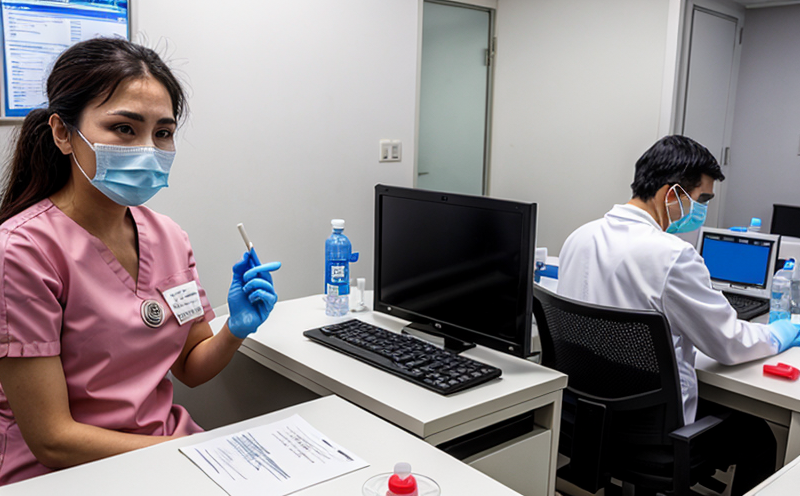Infectious Hematopoietic Necrosis Virus IHNV Testing in Fish Validation Method Development Test
The Infectious Hematopoietic Necrosis Virus (IHNV) testing in fish validation method development test is a critical service for the clinical and healthcare sector, particularly within virology and serology testing. This service ensures that laboratory methods used to detect IHNV are accurate, reproducible, and reliable. IHNV is a significant pathogen affecting salmonids and other teleost species, causing severe mortality in fish populations. The ability to accurately diagnose this virus through validated testing methods is essential for controlling outbreaks, preventing disease spread, and maintaining the health of aquatic ecosystems.
Our laboratory specializes in developing robust validation protocols for IHNV diagnostic tests using advanced molecular techniques such as real-time PCR (polymerase chain reaction). These methods allow us to detect even minimal viral loads within affected fish samples. We follow international standards like ISO and ASTM, ensuring our methodologies are consistent with global best practices.
Developing a validated method involves several key steps. First, we establish the baseline performance of candidate tests by comparing them against existing gold standard assays. This step ensures that any new test introduced into routine practice meets stringent quality criteria before being adopted. Next comes optimization and troubleshooting—fine-tuning parameters to achieve optimal sensitivity and specificity while minimizing cross-reactivity with other viruses.
Once a promising method has been identified, we conduct extensive validation studies following strict protocols outlined in relevant guidelines such as the Clinical Laboratory Improvement Amendments (CLIA) or European Union harmonized methods. During these trials, multiple batches of samples are tested under various conditions to evaluate robustness and reproducibility across different laboratories.
Validation also includes assessment of analytical performance characteristics including linear range, precision, accuracy, and limit of detection/quantification (LOD/LQ). These metrics help determine whether a test can reliably detect low concentrations of IHNV in infected fish. Additionally, we consider biological factors such as host species variability when designing validation protocols.
After successful completion of all validation stages, our experts generate comprehensive reports detailing each aspect of the testing procedure. This documentation serves as evidence that the validated method meets regulatory requirements and can be reliably implemented by other laboratories.
This service is particularly valuable for researchers conducting field studies on IHNV prevalence or efficacy trials involving antiviral treatments. It also benefits commercial hatcheries looking to implement quality control measures aimed at preventing costly losses due to viral outbreaks. By providing accurate, reproducible diagnostic tools, we contribute significantly towards protecting aquatic biodiversity and supporting sustainable aquaculture practices.
Why It Matters
The importance of accurate IHNV testing cannot be overstated in the context of global fish health management. Accurate diagnosis enables early intervention strategies which are vital for controlling outbreaks effectively. Early detection allows for targeted treatment options that minimize mortality rates among affected populations.
- Preventive Measures: Regular testing helps identify potential hotspots where IHNV may be present, allowing proactive measures to be taken before widespread infection occurs.
- Research Insights: Validated tests provide reliable data for scientific studies aimed at understanding the lifecycle of IHNV and developing effective prevention methods.
- Economic Benefits: Reduced mortality rates translate into lower production costs and increased profitability for commercial operations.
In addition, compliance with international standards ensures that all testing practices align with established guidelines promoting best laboratory procedures worldwide. This consistency enhances trust both within the industry and among regulatory bodies overseeing aquatic health programs globally.
Industry Applications
The application of IHNV validation methods spans across various sectors including academic research institutions, governmental agencies responsible for wildlife conservation, private aquaculture enterprises, and international organizations focused on sustainable fisheries development. In academia, researchers use validated tests to explore novel approaches to combating viral diseases in aquatic environments.
Governmental bodies employ these services to monitor the spread of IHNV within natural habitats, ensuring that appropriate measures are taken to mitigate risks posed by this virus. Private aquaculture facilities leverage our expertise to maintain healthy stock levels and prevent costly disruptions caused by unexpected outbreaks.
International organizations rely on validated testing protocols when assessing compliance with international regulations governing aquaculture practices. Such collaborations help standardize global approaches towards managing aquatic diseases, fostering cooperation between countries sharing borders along waterways.





